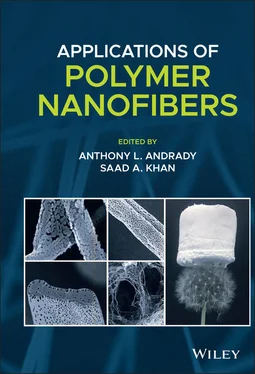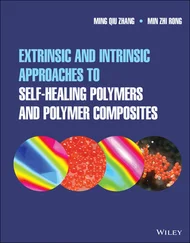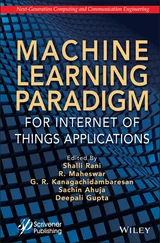Applications of Polymer Nanofibers
Здесь есть возможность читать онлайн «Applications of Polymer Nanofibers» — ознакомительный отрывок электронной книги совершенно бесплатно, а после прочтения отрывка купить полную версию. В некоторых случаях можно слушать аудио, скачать через торрент в формате fb2 и присутствует краткое содержание. Жанр: unrecognised, на английском языке. Описание произведения, (предисловие) а так же отзывы посетителей доступны на портале библиотеки ЛибКат.
- Название:Applications of Polymer Nanofibers
- Автор:
- Жанр:
- Год:неизвестен
- ISBN:нет данных
- Рейтинг книги:4 / 5. Голосов: 1
-
Избранное:Добавить в избранное
- Отзывы:
-
Ваша оценка:
- 80
- 1
- 2
- 3
- 4
- 5
Applications of Polymer Nanofibers: краткое содержание, описание и аннотация
Предлагаем к чтению аннотацию, описание, краткое содержание или предисловие (зависит от того, что написал сам автор книги «Applications of Polymer Nanofibers»). Если вы не нашли необходимую информацию о книге — напишите в комментариях, мы постараемся отыскать её.
Explore a comprehensive review of the practical experimental and technological details of polymer nanofibers with a leading new resource Applications of Polymer Nanofibers
Applications of Polymer Nanofibers
Applications of Polymer Nanofibers
Applications of Polymer Nanofibers — читать онлайн ознакомительный отрывок
Ниже представлен текст книги, разбитый по страницам. Система сохранения места последней прочитанной страницы, позволяет с удобством читать онлайн бесплатно книгу «Applications of Polymer Nanofibers», без необходимости каждый раз заново искать на чём Вы остановились. Поставьте закладку, и сможете в любой момент перейти на страницу, на которой закончили чтение.
Интервал:
Закладка:
Comparing traditional needle electrospinning with needleless electrospinning with a model PEO system, the fiber diameters were comparable (Thoppey et al. 2012). Further, nanofiber sizes from needleless electrospinning follow similar trends with processing parameters. Fiber size is proportional to polymer concentration and inversely proportional to collection distance. Examining the applied voltage, the average fiber diameter decreases and fiber size distribution increases with increasing voltage (Han et al. 2014; Nurwaha and Wang 2015). The number of jets increase as the applied voltage increases. The flow rate per jet (i.e. the jet diameter) also increases with increasing voltage. The geometry of the charged electrode affects the electric field and thus also can significantly affect fiber diameter (Han et al. 2014; Nurwaha and Wang 2015). Solution properties also affects the needleless electrospinning process. Adding a significant amount of salt to the polymer solution can decrease the jet diameter. Decreasing the solution viscosity increases the number of jets by minimizing jet‐to‐jet interactions. Decreasing the surface tension maximizes the number of jets to provide the highest throughput (Thoppey et al. 2012). These results qualitatively match modeling approaches to predict the maximum density of jets using a leaky dielectric model, static cone‐jet. Assuming the electric field is balanced by surface tension, the wavelength ( λ ) with the shortest formation time is
(1.12) 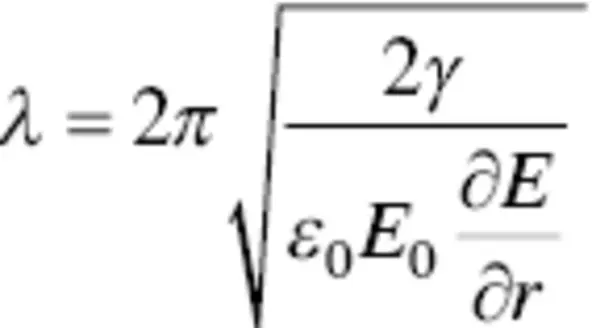
where γ is surface tension, ε 0is the permittivity of free space, E 0is the electric field at the edge of the fluid, and 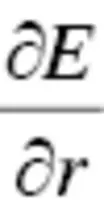 is the electric field gradient. The shorter the wavelength, the higher the maximum number of jets. Therefore, the maximum number of jets increases with decreasing surface tension and increasing electric field strength. Additionally, the same relationship for current in needleless electrospinning has been reported (Yener et al. 2013). Counting the number of jets, Yener et al. surmised that the value of current is approximately the same in all the jets occurring simultaneously.
is the electric field gradient. The shorter the wavelength, the higher the maximum number of jets. Therefore, the maximum number of jets increases with decreasing surface tension and increasing electric field strength. Additionally, the same relationship for current in needleless electrospinning has been reported (Yener et al. 2013). Counting the number of jets, Yener et al. surmised that the value of current is approximately the same in all the jets occurring simultaneously.
1.7.3 Alternative Fiber Production Methods
Alternative methods to nanofiber production have also been considered including solution blowing and centrifugal spinning and are compared to electrospinning methods in Table 1.3. In solution blowing, compressed air drives fiber formation. The most common setup is a concentric nozzle system with the polymer solution in the inner nozzle and a high‐pressure gas is delivered through the outer nozzles. As the polymer solution exits the nozzle, the gas shears the solutions and the solvent evaporates. The high shear forces perturb the liquid jet to a bending instability as it forms a solid nanofiber. Therefore, similar to electrospinning, the resulting fibers are affected by the bending instability, stretching, and evaporation rate of the solvent. Analogous to electrospinning, the polymer solution properties (concentration, viscosity, molecular weight, surface tension, and vapor pressure) and ambient conditions (temperature, humidity, and pressure) also affect fiber formation. The process parameters that affect the fibers are flow rate, gas flow pressure, nozzle‐to‐collector distance, and the nozzle geometry. Randomly oriented fiber with diameters between 40 nm and several μm have been achieved, comparable to electrospinning. The production rate is ~fourfold higher than electrospinning (Stojanovska et al. 2016).
Centrifugal spinning is an alternative approach with high mass production rates. Centrifugal forces initiate jet formation as in cotton‐candy production. A polymer solution or melt is fed into a rotating chamber with multiple orifices. As the chamber rotates, centrifugal forces the polymer solution/melt out of the orifices. When the centrifugal forces exceed the surface tension and viscous forces, a liquid jet is initiated. The jet elongates along a curved trajectory and the solution evaporates until the jet reaches the collector. Alternatively, a nozzle‐less system can be used, in which the liquid polymer spreads on a disk. Rayleigh–Taylor instability causes fingering and jet initiation. After jet initiation, the necking, whipping, and jet trajectories are comparable for both setups. The critical angular velocities and jet velocities for both system have been recently reviewed (Zhang and Lu 2014). Similar to electrospinning, fiber formation is primarily affected by solution properties (viscoelasticity, surface tension, and vapor pressure), setup characteristics (orifice radius) as well as process parameters (angular velocity, orifice‐to‐collector distance). The polymer properties (surface tension, molecular weight, and viscoelasticity) must suppress jet breakup to prevent the formation of droplets or breaded fibers. Using centrifugal spinning, fibers 25 nm to several μm have been achieved. Typically, fibers are uniaxially aligned. Production rates of ~50 g/h or ~100‐fold higher than electrospinning have been reported (Stojanovska et al. 2016).
Table 1.3 Comparison of fiber production methods.
| Method | Fiber size | Scale | Production rate (g/h) |
|---|---|---|---|
| Needle electrospinning | 40 nm–2 μm | Bench | 0.3 |
| Melt electrospinning | 800 nm–500 μm | Bench | 300 |
| Needleless electrospinning | 40 nm–2 μm | Industrial | 100 |
| Solution blowing | 40 nm–several μm | Bench | 1.2 |
| Centrifugal spinning | 25 nm–several μm | Bench | 50 |
In closing, electrospinning is a widely used technique for producing nonwoven nanofibers on a laboratory scale. Significant effort has been spent on understanding how process parameters, e.g. flow rate, applied voltage, tip‐to‐collector distance, affect the final fiber size using theoretical and experimental approaches. However, the experimental data is conflicting and the changes in fiber diameter relatively minor. The solution properties play a significant role in the ability to produce uniform fibers. The polymer concentration and elastic properties generally dictate electrospinnability. Factors in the electrospinning setup, e.g. auxiliary electrodes, collector geometry, provide some tunability in terms of nanoparticle size and nanofiber patterning. Ability to make hierarchical fiber structures and complex cross sections have advanced significantly and provide opportunities in advanced functional properties. Production of nanofibers on a larger scale is a growing area of interest.
References
1 Abbasipour, M. and Khajavi, R. (2013). Nanofiber bundles and yarns production by electrospinning: a review. Advances in Polymer Technology 32 (3): 1–9.
2 Agarwal, S., Wendorff, J.H., and Greiner, A. (2008). Use of electrospinning technique for biomedical applications. Polymer (Guildf) 49 (26): 5603–5621.
3 Agarwal, S., Wendorff, J.H., and Greiner, A. (2009). Progress in the field of electrospinning for tissue engineering applications. Advanced Materials 21 (32–33): 3343–3351.
4 Ahmed, F.E., Lalia, B.S., and Hashaikeh, R. (2014). A review on electrospinning for membrane fabrication: challenges and applications. Desalination 356: 15–30.
5 Andrady, A.L. (2008). Science and Technology of Polymer Nanofibers. Wiley.
Читать дальшеИнтервал:
Закладка:
Похожие книги на «Applications of Polymer Nanofibers»
Представляем Вашему вниманию похожие книги на «Applications of Polymer Nanofibers» списком для выбора. Мы отобрали схожую по названию и смыслу литературу в надежде предоставить читателям больше вариантов отыскать новые, интересные, ещё непрочитанные произведения.
Обсуждение, отзывы о книге «Applications of Polymer Nanofibers» и просто собственные мнения читателей. Оставьте ваши комментарии, напишите, что Вы думаете о произведении, его смысле или главных героях. Укажите что конкретно понравилось, а что нет, и почему Вы так считаете.
